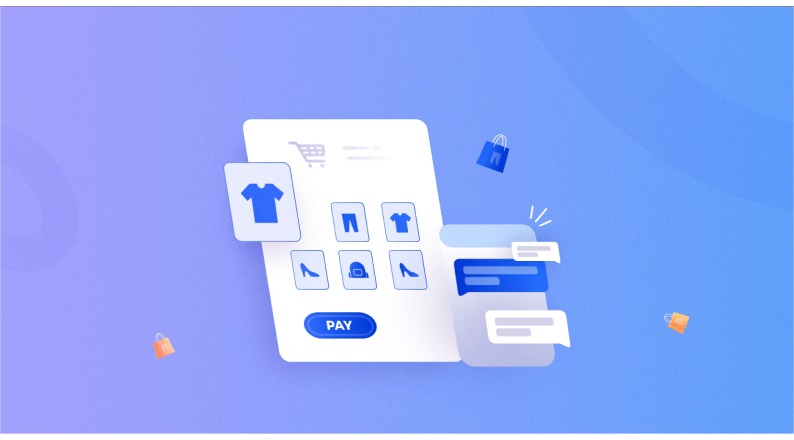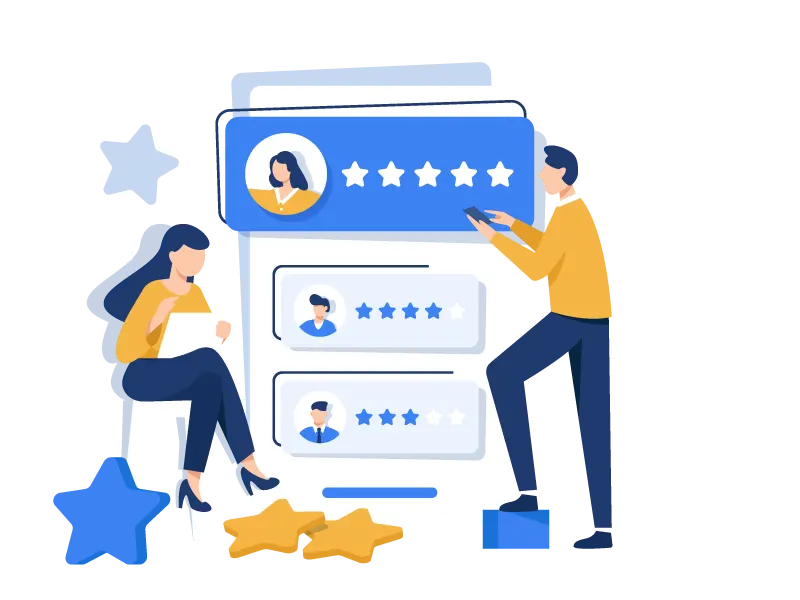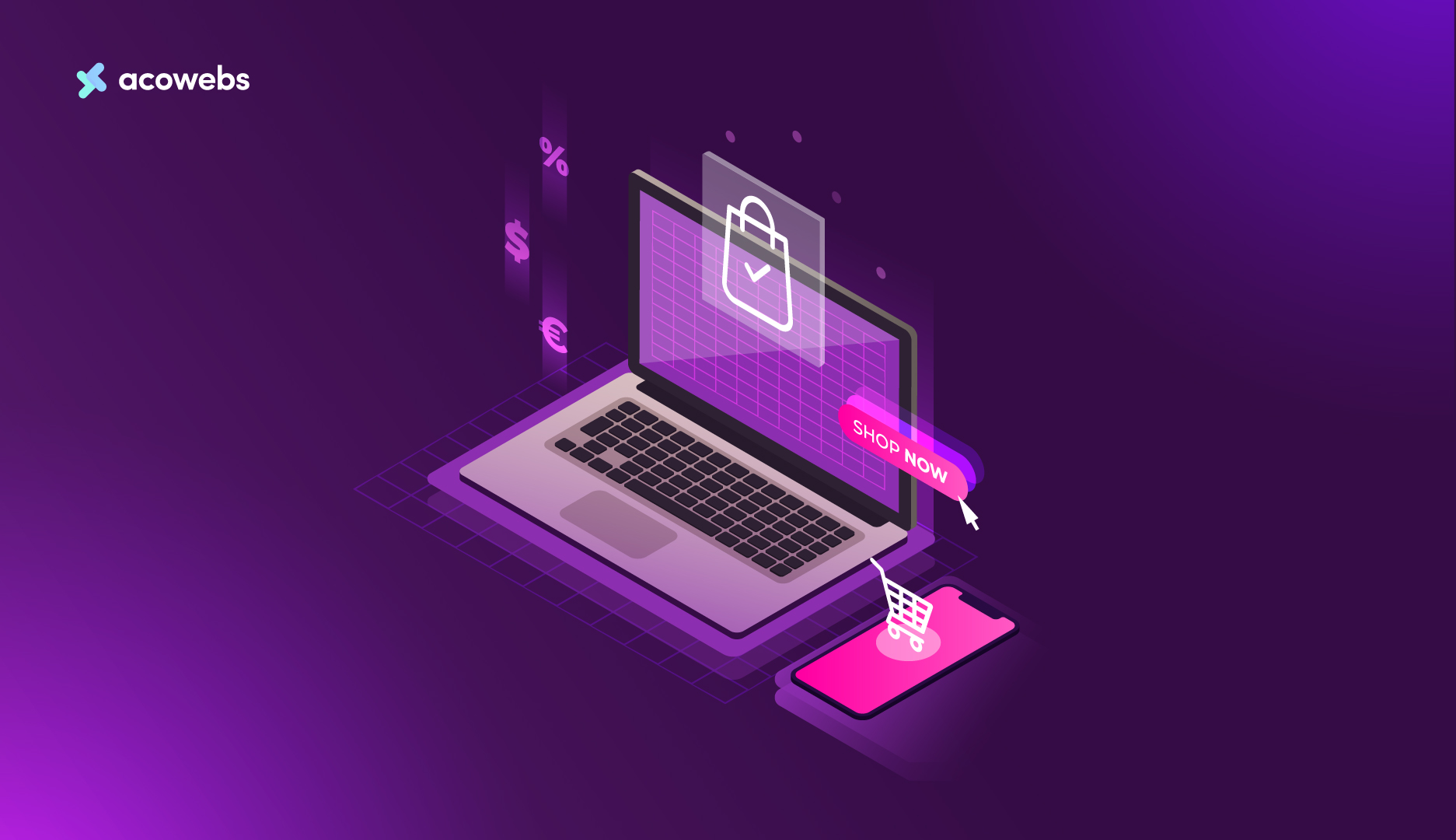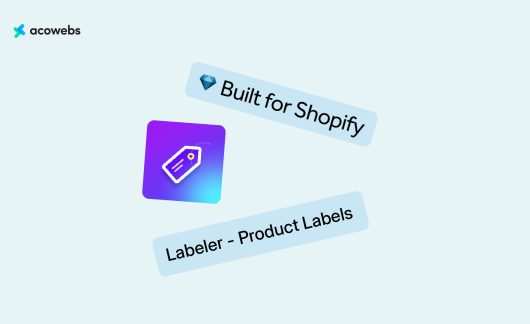Launch Your eCommerce Business in 8 Steps
- Market Research
- Product selection
- Creating a business plan
- Create your eCommerce store
- Setup payment and shipping
- Marketing and traffic generation
- Operations and customer support
- Launch your eCommerce business
1. eCommerce Market Research
It is important to identify the proper plans regarding market niches for creating a stable and highly profitable e-commerce company. Though it is critical to find a large market with high needs, it is even more important to seek out a small corner of that market that is stable, where there is not too much competition, and where new ideas can flourish. Analyse and identify possible customer pain areas and their possible behavior. Identify the gaps in the competition and market by assessing the strengths and weaknesses of people’s comments and competitor’s shortcomings.
Another important aspect of the process found at this stage is the formation of the overall image of the brand. People’s needs are most often met through sensory experiences, so tailor brand stories to be genuine and to uniquely fill a need. As presented in the guide to building a strong eCommerce brand, a good number of people feel attached to a strong brand, and they trust it; they are likely to purchase from it repeatedly.
In case you are blank on what to choose, there are detailed lists of the available eCommerce businesses ideas. When it comes to subscription boxes or environmentally friendly consumer product goods, opportunities are virtually limited in 2025. But the thing is here to turn this knowledge into something superior and extraordinary. Learn how specific techniques for identifying a sustainable and profitable market niche, and test customer interest to ensure he or she will remain relevant in the long-term.
Useful Resources on eCommerce Market Research ;
2. eCommerce Product Selection
The choice your store offers to the public is extremely important to the success of your store. The grocery shoppers of the year 2025 are likely to demand better quality products that address their needs and/or are in harmony with their principles. Firstly, one should carry out a product analysis to understand its potential market need, the possible returns on investment, and the level of competition expected. Assess the reliability of the supplier and other aspects of fulfillment in order to prevent problems with the quality of or a delay in the products.
After the identification of potential products, pre-verify these products through pre-usage campaigns, concept tests, or pilot selling. Knowledge in the validation of products helps to minimize risks involved in the process as well as ensure the correct allocation of resources. Coordinate the evaluation of the competitors’ products with the help of upgraded methods like pricing mechanisms, customer reviews, and social proof approaches. Competitor analysis is important because it assists you in departing from the competitor’s offerings in terms of the features, price, or service offering.
Useful Resources eCommerce Product Selection;
3. Create a eCommerce Business Plan
The kind of business plan, when developed, helps an individual to have a guideline to start and grow an eCommerce business.
3.1 Business Model
White-label and private-label models in the year 2025 received a substantial measure of popularity. White-label eCommerce allows a business or a retailer to sell products that are produced by a third-party manufacturer and packaged and marketed under a completely different label than that of the retailer themselves, thus saving on manufacturing cost, time, and overall market launch time. This article will provide insights into why white-label eCommerce is vital for your brand and will further explain how it increases the brand’s visibility and scalability.
Alternatively, private labeling offers more control over product quality and customization. In the current world, private label products offer an opportunity to introduce products that have their own image. In the buyer’s guide to a successful private label business on Shopify, there is information on selecting a supplier to branding.
3.2 Financial Planning
It defines the funds required to start the business and sustain its operation, the strategic ways of managing the prices, and the possible revenues it will generate. However, one should consider the cost of developing the product, advertising and distribution channels. Still setting appropriate profit margins would be an interesting and effective strategy for further stabilization of the company’s presence enough to expand it. Maintain flexibility to handle a variety of unanticipated costs which will occur at one time or another and ensure tight cash control.
3.3 Legal and Law
It should be noted that there is nothing as crucial as having adequate knowledge of the tax laws of eCommerce businesses. In relation to VAT or the Sales Tax put in place in your country and other regulations of the global market. Ensure and specify the refund, privacy, and security policies of your business to ensure security and gain customer confidence.
Useful Resources eCommerce business plan ;
4. Create Your eCommerce Store

4.1 Choose a Platform
The selection of the appropriate platform sets how easily your store is and offers customers a good experience. Between 2025, Shopify and WooCommerce will still be dominant. For first-timers as well as for rapidly growing businesses, Shopify is the most optimal due to its simplicity, integrated security measures, and full-blown support.
Useful Resources ;
WooCommerce is suitable for those business organizations that require flexibility at the right side of independent control. It is free to use, easily adaptable, and compatible with the use of WordPress. Some of the sources include WooCommerce setup tutorials and why you should have a WooCommerce store which share procedures on how to develop and operate the store.
Useful Resources ;
It may become challenging to compare Shopify with WooCommerce, and it is understandable if you do not know which one to use; the following are comparisons of each platform’s strengths and weaknesses.
| Feature | WooCommerce | Shopify |
|---|---|---|
| Ease of Use | Moderate (requires setup) | Very easy |
| Customization | Complete access to code enables high customization | Depending on the framework, Shopify has limited customization abilities |
| Cost | Core plug-ins are free, but it costs extra for hosting, themes and plugins | Subscription fee starting from $39 a month + Transaction fee |
| Hosting | Self-hosted (you need to buy hosting) | Shopify handles hosting |
| Scalability | Scalable but requires optimization | Highly scalable with built-in features |
| Themes & Design | WooCommerce comes with both free and paid themes | Shopify comes with limited free themes and premium themes |
| Plugins/Apps | 50000+ free plugins on wordpress.org and paid plugins too. | Shopify App Store (paid & free apps) |
| Payment Gateways | Supports all major gateways, no extra fees from WooCommerce’s side, transaction charges depends on payment provider. | Shopify Payments (0% fee) or external gateways (extra fees) |
| SEO & Blogging | WooCommerce has strong SEO and blogging features | Shopify also offers good SEO, but the blogging features are limited |
| Security | You handle security (SSL, updates, backups) | Shopify takes care of security |
| Support | WooCommerce is driven by community | Shopify offers 24×7 customer support |
| Best For | WooCommerce is the best option for full control and flexibility | Shopify can be chosen if you need hassle-free store setup and operations |
Useful Resources on deciding between Shopify vs WooCommerce ;
4.2 Domain Name and Branding
Choose your domain name which represents your brand, and easy to memorize. Using similar domain, logo, color, and tone build your organization’s credibility and help the audience recognize it. Brand building helps them to make their store distinguished in various competitive markets and have long term customer relationships.
4.3 Product Pages and Content
Optimized product pages are crucial for conversions. Implement best practices for product pages by using high-quality images, clear CTAs, and detailed descriptions. Invest in SEO for product pages to enhance visibility on search engines.
A well-crafted product description addresses customer pain points, highlights key benefits, and includes persuasive language. Don’t overlook the importance of an effective About Us page; it builds credibility and shares your brand’s story.
For Shopify, leverage strategies to optimize product pages. WooCommerce users can customize product pages and apply store design psychology to guide customer behavior and improve conversions.
Useful Resources eCommerce product pages and content ;
- eCommerce Product Page Best Practices
- SEO for eCommerce product pages
- How to write unique product description for your eCommerce store
- Creating an effective about us page for your eCommerce website
- How to optimize shopify product pages
- How to Customize WooCommerce Product Page to Boost Your Sales
- eCommerce store design psychology
5. Setup Payment and Shipping
5.1 Payment Processing
It is important to accept many forms of payments as much as possible to be able to meet the needs of your clients. Try to also consider encouraging the use of biomatrix payments as well as digital wallets in order to bring about the future of eCommerce payments. The identification technology increases the level of security, and the enabling convenient payments approaches minimize the chances of cart abandonment.
Useful Resources on eCommerce Payment and Shipping ;
- Future of eCommerce payment
- What is biometric payment?
- How digital wallets help eCommerce stores sell more
5.2 Packaging
The packaging design also reflects the company’s image and its efforts to enhance value to customers in order to gain repeat sales. Read and follow the tips for eCommerce packaging to safeguard items and avoid worsening the environmental condition. Maximize your unboxing experience by writing thank you notes and company. Message slips are inserted into the package.
Useful Resources eCommerce Packaging ;
5.3 Shipping
Clients look for two major factors: reliable shipping options and policies. Delivering the orders in a timely and effective manner, using various shipping options available, and informing the consumers about the location of the parcel will result in consumers trusting the online store.
6. Marketing and Traffic Generation
6.1 Marketing Channels
Promote the development of a multi-channel marketing strategy in order to increase traffic and sales. It is now possible to market your services or products specifically to different demographic groups, consumer behaviors, geographic locations, and even the time of day your readers are accessing the internet. Engage in the performance marketing approach to know the exact value of each dollar spent and use neuromarketing to forge the buyer’s behavior.
Useful Resources on eCommerce Marketing ;
- Top E-Commerce Marketing Strategies
- Short Term Vs Long Term Digital Marketing Strategies
- Performance Marketing for Your eCommerce Store
- Neuromarketing in eCommerce
- Direct to Consumer (DTC) Marketing
- Leverage Performance Marketing for Your eCommerce Store
- Product Marketing Vs Growth Marketing
- How to promote your online store for free
eCommerce SEO
In particular, to improve SEO one should monitor the SEO KPIs and utilize various tools for eCommerce SEO. Users of WooCommerce can find out things to follow for a better SEO for the WooCommerce store and complete WooCommerce SEO solutions.
Useful Resources on eCommerce SEO ;
eCommerce Ads
Optimizing Pay-per-click advertising networks, ad kinds, and Google Shopping Advertising. The decision may be made between Google and Facebook Ads or between Facebook carousel ads and remarketing ads to increase the conversion rate.
Useful Resources on eCommerce Ads ;
- Top PPC Ad Networks
- Top PPC Ad formats
- Crucial elements of shopping Ads
- Which Is Better For Ecommerce Business – Facebook Ads Or Google Ads
eCommerce Email Marketing
Use the opportunities of emailing campaigns to follow up the leads and broaden their interest. It takes the power of personalizing eCommerce campaigns to a new level and makes it easy to engage your target recipients with eCommerce email.
Useful Resources on eCommerce Email Marketing ;
eCommerce Social Media Marketing
In social media, create a social media sales strategy for e-commerce, define objectives and goals, and carry out influencer marketing. The use of materials from other user is highly recommended so as to develop trust amongst the user and tiktok for ecommerce marketing can be effectively used.
Useful Resources eCommerce Social Media Marketing ;
6.2 Sales Funnel and Automation
The secrets of building a proper sales funnel for organic traffic. Integrate high levels of automation, which can help automate marketing and customer relations, together with the order processing systems.
As a result, it is necessary to create a complete blueprint of the customer journey map for personalization. It’s abandoned cart and cart abandonment emails to recover lost sales.
Useful Resources eCommerce Sales funnel and automation ;
- Turn Your eCommerce Organic Traffic Into Valuable Leads
- What is eCommerce Automation
- How to Create a Customer Journey Map
- How to Recover Abandoned Carts in WooCommerce
- Increase your conversion rates Using Abandoned Cart Emails
7. eCommerce Operations and Customer Service
Outsourcing is the rational method of achieving better operational efficiency while providing excellent customer service in the eCommerce industry. They make sure that the consumers are served not only to their satisfaction but also that they start marketing your products for you. Coordinating efficiency on the back end of the company while still providing great service to the customer is a good way to develop a robust and sustainable business model.
7.2 Customer Support

Excellent assistance is not just an issue of meeting customers’ demands; it is a strategic course for building customer relationships. Live chat support integration is considered to be one of the most effective ways to help a user as soon as possible. In contrast to email, live chat directly connects a user’s question and a form of response, thus lowering customer effort and boosting satisfaction. It is a one-to-one channel through which shoppers can seek information on some products or be offered help checking out in real-time.
Another important benefit of Live Chat for eCommerce sites is that it contributes to reducing cart abandonments. Appointing a chat pop-up when the customer shows any kind of uncertainty or concern regarding the purchase process can help relieve the concern and seal the deal. Besides, providing customers with the possibility to reach you through email, social media, or call offers omnichannel support. A support team working with an intelligence base and/or FAQ helps maintain high-quality feedback and increases the client’s confidence.
Useful Resources on eCommerce customer support ;
7.3 eCommerce Analytics and Reporting
It provides them with an opportunity to have evidence rather than apply guesswork when making decisions. By using something like Google Analytics, business owners are privy to customer activity in the stores, such as their bounce rate, conversion path, and the products that customers engage with the most. This means that the strategic application of the insights from the data goes a long way in helping firms, especially in the area of marketing, by tailoring specific marketing approaches and offers that directly appeal to the target consumers.
Heatmaps can be considered as the further development of analytics as it tracks where exactly users click, scroll, or interact with. It shows places on a website that could be problematic for a visitor and require change to boost conversion rate. For example, if it is evident that user do not go below some point in product pages, there is the need to have more call to actions above the fold.
Reporting is another vital element. Store performance, customer satisfaction, and cart abandonment give the overall picture of the store’s performance. They assist in benchmarking of organizational performance over a particular period and enables the setting of achievable sales targets, and emerging foothold for growth. This means that when issues related to the working of a firm are reported in detail, it becomes possible for a firm to correct the weak areas while at the same time exploiting the strong areas.
Useful Resources on eCommerce analytics and reporting ;
- How to use google analytics on your eCommerce website
- How to use heatmaps for your eCommerce store
- How to leverage customer data to increase eCommerce sales
- Important eCommerce Reports
8. Launch Your eCommerce Business
The launch phase defines the image and the identity of an eCommerce store in the market. Launched strategically and effectively, the APP generates much attention, traffic, and a legion of early adopters who act as references to others. This way, all steps are planned respectively on the path of rollout until the establishment of the customer base is made.
The concept of product launch should be preceded by market research and definition of target customers personalities. Having information on the target population is critical as it enables you to understand their mind-set when placing your message to them. Creating teasers on social networks, sending e-mailings regularly, and offering only unique early birds will create the impression. A good number of consumers will be ready to get a product with a limited knockout discount instead of paying the standard price immediately after the item’s release.
The checklist below clearly illustrates a step-by-step process that must be followed before launching the store. This entails checking the effectiveness of the website, ways of protecting the payment modes, checking how the website functions on mobile devices, and confirming that the inventory system will operate appropriately. It is, therefore, very important to ensure that customers on the launch day get the desired experience that was expected when the firm was conceptualized.
eCommerce Launch Checklist
Useful Resources Launching your eCommerce business ;
- Pre-Launch Strategies for a Successful eCommerce Product Launch
- eCommerce Website Checklist For Launch Success
Scale Your eCommerce Business
However, getting to the stage where the store is already up and running, whether small or established; it becomes the next challenge to think of expanding the operation. This implies diversification, advancing communication, and experimenting on strategies that will help to achieve a steady profitability.
Optimize Operations
Operational efficiency drives profitability. Economizing is an important factor to consider when scaling because the goal should not be to decrease the quality of services in the course of expansion. It here presents that automation is useful. The chief merits of automating the various processes writ large include cutting the time spent on order completion, follow-ups, and certain aspects like inventorying.
Reasonable management activities include bargaining with the suppliers for improved deal, increasing packing to decrease the means cost, and decreasing the return ratio through clear descriptions about the product. Lean operations lead to the pricing your products in a competitive manner to address the desire of price-sensitive consumers without eroding on the gross.
Useful Resources ;
Expansion
Consequently, scaling can only be done by going beyond the first customers. The expansion of the company to different zones presents them with more opportunities for expansion. For instance, WooCommerce allows flexibility and the ability to scale to handle more influx and complex operations for stores.
To avoid the problems highlighted above, it helps to know how to take proper measures to put your eCommerce business in a ‘recession-proof’ mode. As a result, one can enhance revenue by diversifying the offer, for example, by adding digital products, introducing subscriptions, or extending service offers when the revenue from primary sales declines. There are also service expansion advantages: the growth of product market share knowledge of using a new product brand, Customer loyalty in different markets, and The emergence of new niches or customer groups may also form sustainable development.
Useful Resources ;
Diversify Revenue Streams
Cycling on a single product or sticking with one client base is not a prudent economic strategy in the long run. Diversification helps to mitigate the risks of changing market and provides several routes of revenue. Resale of the subscriptions, club membership, and use of additive goods and services yield high customer value over the lifetime of the water.
The other strategy is affiliate marketing, whereby clients or some other influential persons are awarded commissions for their role in marketing your products. This not only enhances the sales of the products but also the extent of brand awareness. Continuing with the product updates in the store makes the store relevant as it follows the latest trends and customer needs.
Continuous Improvement and Adaptation
It is also growth-oriented and requires constant changes to be continuously made to fit the overall picture of the eCommerce space. Something that may be effective today can be ineffective in the future. This is an affirmation of the notion that firms that maintain an open ear to their patrons as well as keep track of market shifts are the ones that survive and flourish.
Customer Feedback

In any organization, customer feedback is considered to be one of the most important tools used to check on the level of improvement. It is important to actively gather feedback from clients so that one can have a first-hand view of what the clients consider effective or inefficient. Evaluation in feedback and communication exposes areas that cannot be sensed from the result analysis of analytics.
These include implementing suggestions received from the customers since this acts as a way of gaining their confidence and showing them that their input is considered. Such advantages of the targeted approach include gaining more reviews and inviting users to share their experience in the form of a testimonial or a picture of the product used.
Useful Resources ;
Trend Monitoring
To ensure that an enterprise is relevant and competitive in the market, it is imperative that it keeps an eye on trends that are still building up. The future of eCommerce is bright because of current advanced technologies such as quantum computing that could elevate the existing methods of processing large volumes of data and identification of revised consumer preferences.
Such changes in behavior, such as new mobile commerce and voice search, require businesses to keep track of such trends in order to adapt. Periodic evaluation of website features, appearance, and promotion guarantees the store complies with the customer’s expectations.
Useful Resources ;
Conclusion
E-commerce spans beyond having an online store, which is an ideal topic that suits the nature of the business for a company that aims to develop a strong e-commerce platform. It is a continuous improvement model for managing business processes, achieving great customer satisfaction, using business intelligence, and creating innovations. Whether it is the first encounter or the several follow-ups, there is a way to ensure eCommerce businesses retain their customers and even encourage them to come back, especially in a strained market.
Acowebs is a WordPress Plugins and Shopify App Development Company, which helps your ecommerce store scale better and faster, we have developed useful plugins like WooCommerce product addons, WordPress offload media, WooCommerce dynamic pricing etc for WordPress and shopify labels, custom discounts for shopify.












 Login
Login
 Cart
Cart







